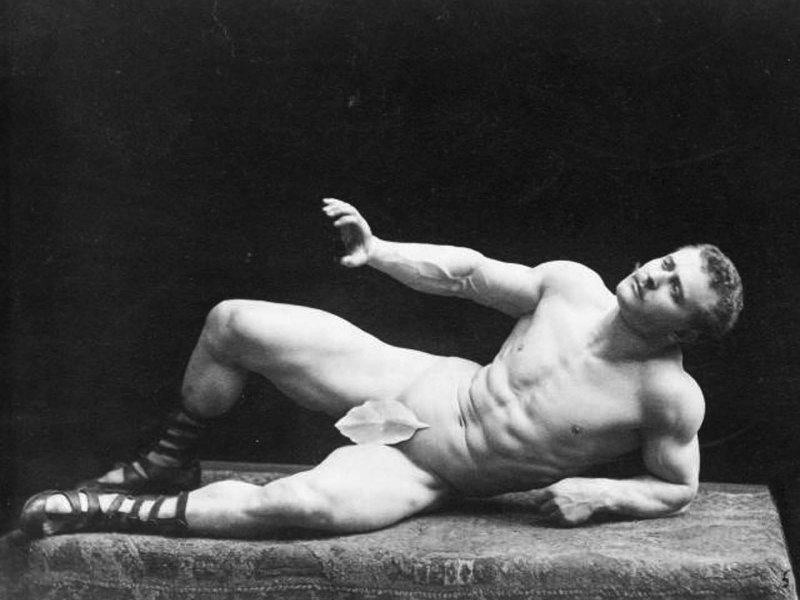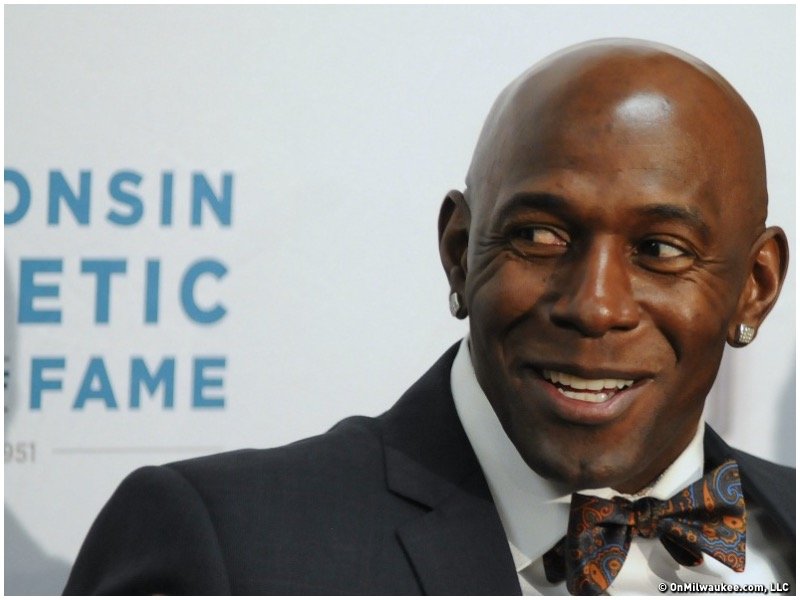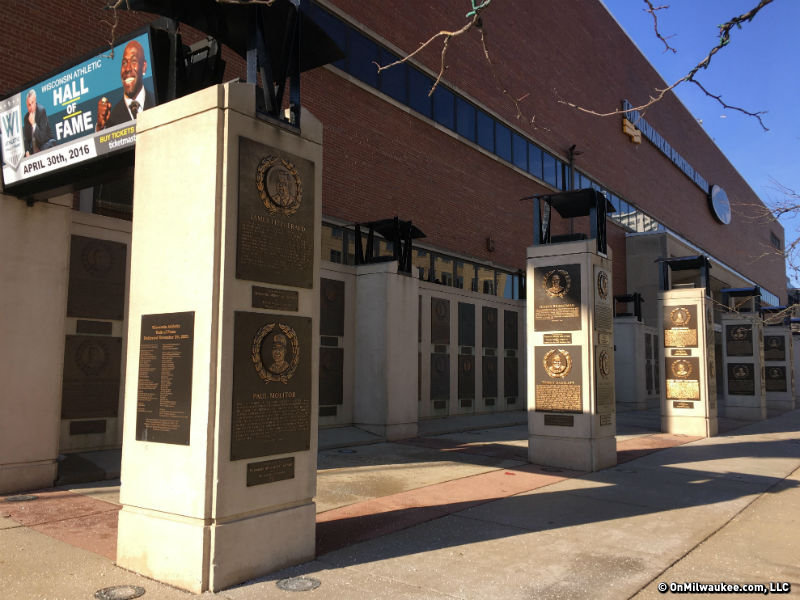According to then-City Treasurer Joseph Krueger, the mission of the Wisconsin Athletic Hall of Fame he founded 60 years ago was to prevent memories of the state's best athletes from fading into oblivion.
"How easily Wisconsin's greats in sports may be forgotten," he said in 1954, mentioning the likes of football's Don Hutson, baseball's Al Simmons and boxing's Richie Mitchell. "There was such inspiration in what they did, they should continue to live in memory long after we're gone."
That doesn't mean just high-profile jocks who call Wisconsin home only during football, baseball and basketball season, either. Or self-aggrandizing coaches of sports dynasties at our hallowed institutions of higher learning whose legends are gilded by high-powered PR operations.
It ought to also include guys like Tom Larkin, a legendary but now little-remembered Milwaukee athlete of more than a century ago once compared to Jim Thorpe, who also became a multi-sport coach lauded in a long-ago Milwaukee Journal headline as "The Man Who Built Champions" – among them some who, unlike Larkin himself, are enshrined in the WAHF.
Born here in 1874, Larkin won the five-mile state speedskating title when he was a student at the 4th Ward School. "He could skate, just as he could swim, all day long," recalled classmate Art Nichol, later a local handball champion.
What he wanted to do most of all was box, but at the Milwaukee Athletic Club, then the cynosure of local sports, they said Larkin was too young. So he took up wrestling instead. Years later, when world heavyweight champion Frank Gotch barnstormed through town and took on all comers at the Star Theater, the 5' 9", 165-pound Larkin alone won the $100 prize by staying the 15-minute limit with him on the mat, despite Gotch's 50-pound weight advantage.
In 1895 the most famous athlete in the world was a Prussian man born Frederich Wilhelm Mueller, known to the audiences that came to gape at him as Eugen Sandow, the most perfectly developed specimen of manhood extant. He made up to $2,500 a week showing off his muscles in an act described by David L. Chapman in his biography, "Sandow the Magnificent:"
"...The curtain went up revealing Sandow on a pedestal. The strongman was dressed in tights and turned around as colored lights were flashed upon him. He then flexed his muscles, exhibiting his amazing muscle control by making them jump and flutter to music. Next he dismounted from his pedestal and took up two 56-pound dumbbells and turned a backward somersault ... He next performed the same trick blindfolded and with his feet tied."
Sandow's grand finale was lying on his back and balancing three full-grown horses standing on a board laid across his stout chest.
No wonder that when Larkin saw him perform at the MAC in 1895 he made up his mind to become "a second Sandow." The results made peoples' jaws drop. "Sandow with his golden hair might have been able to lift a heavier weight than Larkin," wrote Oliver Kuechle in The Milwaukee Journal in 1948, "but even Sandow couldn't do all that Larkin did." That included endless pull-ups on the gymnastic rings with first his left arm and then his right arm. Try it; it'll make a great tweet if you can still feel your arms.
Larkin also became an accomplished gymnast and tumbler, and in the late 1890s he toured Europe doing an acrobatic act with Adonis Ames, who was billed as "world's greatest contortionist." After Ames died in 1899, Larkin came home and as first athletic director of the Sodality Athletic Club he developed and coached champions in handball, track, wrestling, swimming, gymnastics, handball and boxing (he finally learned the manly art from heavyweight champion Bob Fitzsimmons himself).
"He not only told you what to do," said Art Shinner, who became a national handball champion under Larkin's direction, "he went ahead and showed you how to do it. We could never figure out how he got his complete knowledge of how to do so many sports. He taught himself anatomy, too, and could explain the why of things as well as the how."
The path to Olympic glory of Alvin Kranzlein, who won four gold medals in the 1900 Games, started at Tom Larkin's door.
In 1906, Larkin opened what would become one of the most famous gyms in the country in the Patton Building on the corner of North 5th Street and West Wisconsin Avenue. There was a player piano in the foyer, and a full handball court. Through 1918, Larkin trained top boxing contenders Bob Moha, Richie Mitchell, Ted Jamieson and Dave Maier there.
After World War I he became athletic director of his beloved MAC, where the teams he coached "were known and feared throughout the Middle West," according to the Journal.
"On two successive occasions his boxers won all eight Central AAU championships. His swimming and hockey teams consistently defeated big-time collegiate opponents. His ice skaters and handball players were always among the leaders."
An accident – he tripped on a mat while carrying a 150-pound dumbbell – that put Larkin in the hospital for two months in 1933 and left him with partial paralysis ended his MAC career and rigorous gym workouts and exhibitions. He compensated by walking up to 25 miles a day.
He was 83 when the MAC threw him a testimonial dinner – against his wishes, because he figured "too many of my old acquaintances have forgotten me." Almost 400 people turned out and approved by acclimation the proclamation that "Wisconsin has never had a greater all-around athlete, nor one proficient in so many different things."
His one-time idol Sandow died in 1925 at age 58, either from the strain of single-handedly lifting an automobile out of a ditch, or, more likely, syphilis. The exit of the "Second Sandow" wasn't so dramatic. Larkin died of natural causes at age 88 on May 12, 1962.
Impressive as his own athletic achievements were, "his life work was that of a sculptor," eulogized The Journal – "a man who took undeveloped bodies and turned them into top-notch physical specimens. Health and good condition were his chief goals for every person with whom he worked."
So let's rescue him from oblivion and put him in the Wisconsin Athletic Hall of Fame, already. In recent years the hall has become a largely commercial and corporate enterprise, catering to mostly big-name professional athletes whose presence at the induction dinner will draw a crowd. So why not add a special category for legendary powerhouses like Tom Larkin?





